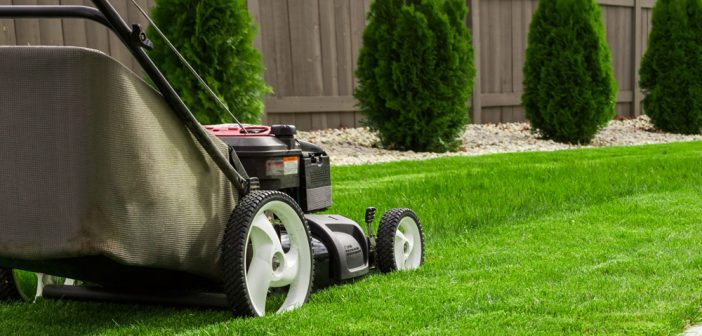During the spring, your primary landscaping goal is to make your lawn healthy for summer. When summer rolls around, it’s time to keep your lawn looking good, despite the higher temperatures and less rainfall. With the right strategies, you can keep your lawn green and beautiful during the hot summer months for your family get-togethers, parties, and barbecues. Below, we’ll look at some of our favorite tips for summer lawn care to help you keep your grass looking great throughout the season.
Water Deeply, Not More Frequently
When the temperatures rise, it can be tempting to over-water your lawn. We understand – it makes sense that you’d want to give your lawn more water if it seems like it’s drying out. However, over-watering your lawn can do more damage than you think. Generally, grass needs 1 inch of water per week to grow properly. When the heat rises it may need more, but that isn’t your cue to water it more often.
We recommend watering your grass more deeply and less frequently. If you water your lawn too often during the dry months, you will encourage drought-sensitive roots. By watering your lawn deeply and less often, your grass will grow drought-tolerant roots that can better withstand the dry summer heat.
Water Earlier in the Day
During summer, evaporation can be a real problem for lawns. The high heat makes it hard for water to penetrate the soil and be absorbed by the roots. If you don’t water early enough in the day, there’s a good chance your grass isn’t benefiting much.
It’s best to water your lawn early in the day before the high heat takes hold in the afternoon. Doing so can minimize evaporation and promote better absorption.
Don’t Water Dormant Grass
When your grass turns brown, it isn’t dying. It’s likely going dormant until the resources are available for it to thrive again. Once this happens, it won’t absorb as much water as it does when it’s actively growing. Over-watering dormant grass can promote root decay, mold production, and permanently damage your lawn.
At the beginning of summer, decide if you will water your lawn regularly or not water it at all. If you don’t water it for a while and it goes dormant, watering it won’t fix the issue at that point. Your grass will stay dormant until the fall but fortunately, most grass recovers on its own once the weather changes.
Raise Your Mower Blade
We get it – it’s hot and the less time you spend mowing, the better.
It can be tempting to lower your mower blade so you don’t have to cut it as often. However, cutting your grass too short during summer can make it more prone to damage from the high heat. This could spell disaster for your lawn.
Generally, taller grass survives better during droughts and periods without rainfall. When grass grows taller, it grows deeper roots that more effectively absorb moisture and nutrients. We recommend mowing no more than 1/3 off the top your grass each time to keep it as healthy as possible.
Keep Your Mower Blades Sharp
Cutting your grass with dull mower blades could cause permanent damage to your lawn. Instead of cutting it cleanly, it will cause tearing and other damage. If your mower tears your grass, it will introduce unnecessary stress your lawn may not tolerate.
Avoid Over-Fertilizing
When your lawn starts to look scraggly, you may feel the urge to fertilize it. If you apply extra fertilizer during the summer heat, it can burn your lawn and cause a spectrum of problems. When fertilizer burns your lawn, your grass will grow a flash of new, tender blades that won’t survive the heat until they mature.
If your lawn is dormant, fertilizing it is the last thing you want to do. It will burn the grass as described above and your blades will die before they can even recover.
Plan for High Traffic
After the family get-togethers, barbecues, and parties, your lawn’s may start to show wearing during the middle of summer. If you’re noticing damage to your lawn in high traffic areas, consider the following solutions to keep it looking fresh.
Consider installing stepping stones in areas where people walk often. Stepping stones not only protect your lawn from wear and tear, but add a great new look to your yard.
Above, we talked about fertilizing during summer. It’s not a good idea to fertilize if you live in a dry climate, but if you’re getting enough rainfall you can fertilize high traffic areas of your lawn to help them recover.
Final Thoughts
Summer can be a challenging time to maintain your lawn, especially if you live in a dry or arid climate. However, proper care can help your grass withstand the harsh conditions and recover quickly when rainfall returns.
Share some of your lawn care tips in the comments below.









